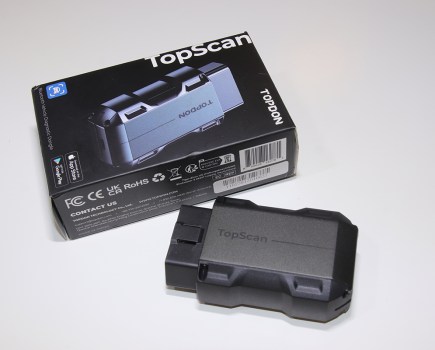The Sealey CP20VOP polisher is part of Sealey’s SV20 series of tools, which share a range of 20V lithium-ion batteries (2-6Ah). They cater for everything from drills and an angle grinder to a saw and several gardening tools.
With a pad diameter of 125mm, this is a small polisher. Perhaps it’s useful for working around objects. I’ll only find out for sure when I put it to test on faded paintwork, which is exactly what I’ll be doing in this review as part of a larger polisher group test. Armed with the sponge pad supplied with the polisher, I got to work with a color restorer, followed by some trusty car polish.
RRP: £115.95, buy it here.
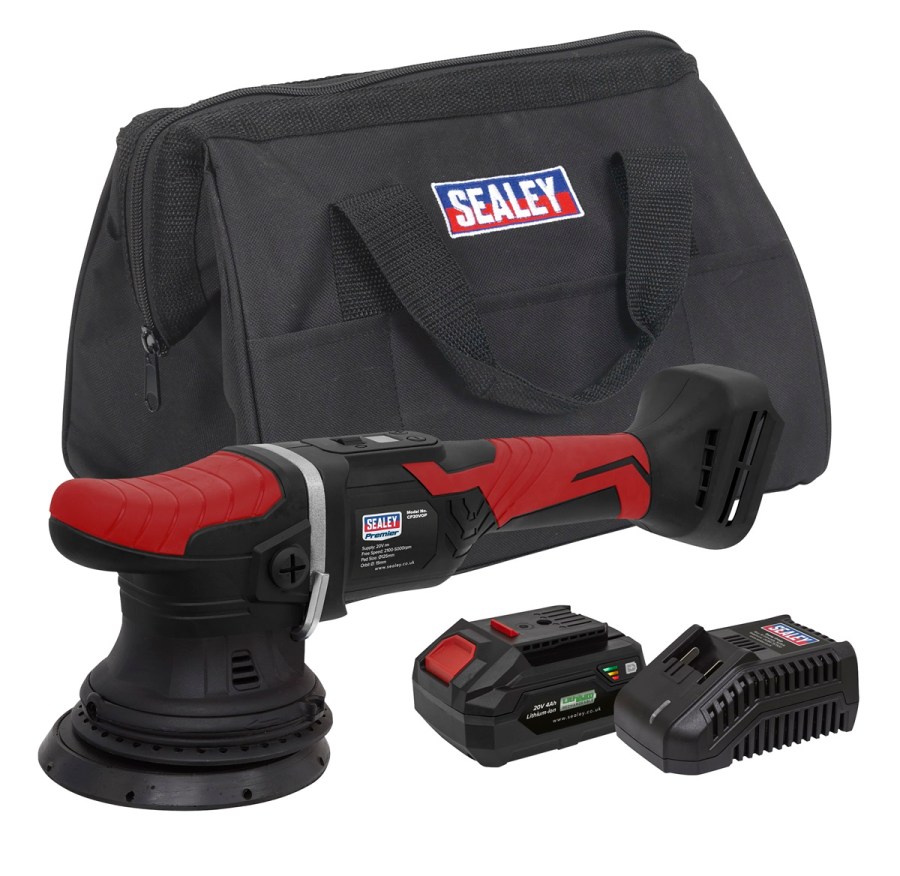
What’s in the box?
A kit bundle for this polisher includes a cloth bag, battery, charger, polisher and a 125mm-diameter sponge pad. Everything can be stored inside the bag.
The polisher is quite compact. It has no additional handle, only a grip at the front of the body. There are two plastic M8 screws adjacent to the spindle. I removed these and found I could fit a handle from another polisher I was testing.
The polisher is supplied with a 125mm-diameter hook and loop backing pad already fitted. However, there’s a Hex tool slotted through the body which can be used to remove the backing pad. Unless you wish to remove the backing pad, it can remain fitted. And this means the sponge pad that’s included with the polisher is quick to fit.
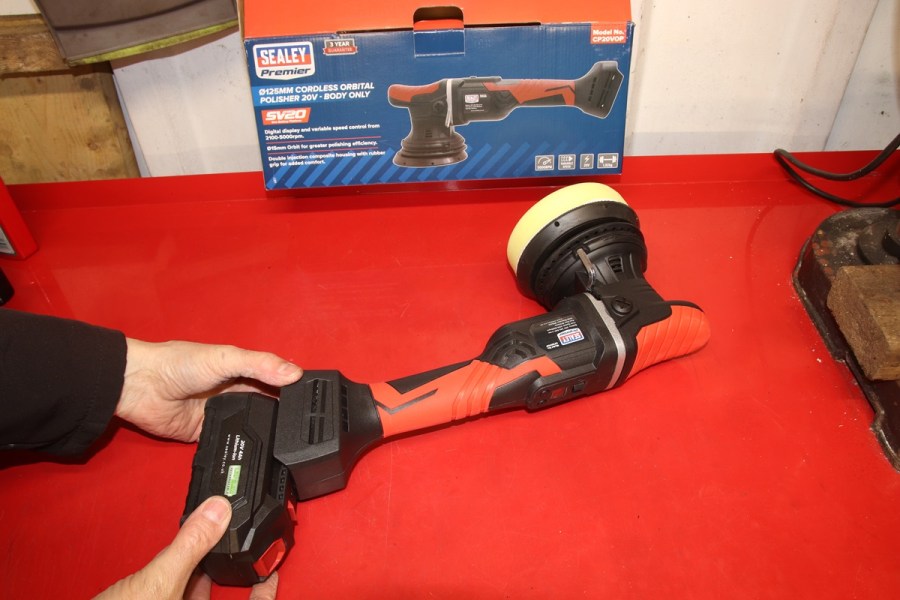
Tech spec
This polisher has a brushless motor. With seven speed settings from 2,000rpm to 4,800rpm, they increase in increments of 500rpm. There’s a 15mm offset orbit, so it rotates off-centre. This should help to avoid swirl marks.
The generic 20V lithium-ion battery (it can be used with a number of Sealey tools) has a useful feature. There’s a button on the side of it, which if pressed, displays the state of charge of the battery. This helps to show whether it needs rechanging. And whether you have a 2Ah or 6Ah battery (or any one in between), they all use the same charger.
The controls for operating this polisher are slightly different to the norm – there’s no trigger. Instead, there’s a slider to switch it on and off, denoted by I and O markings. Once switched on, there’s a small square LCD panel that displays the speed setting, which always starts at zero. The speed setting is changed via two buttons labelled with a plus and minus symbol. The LCD panel can only display two digits, so 4,800rpm for example, is displayed as 48.
Confusingly, the packaging for this polisher states a different minimum and maximum value for the motor’s speed at 2,100rpm and 5,000rpm.
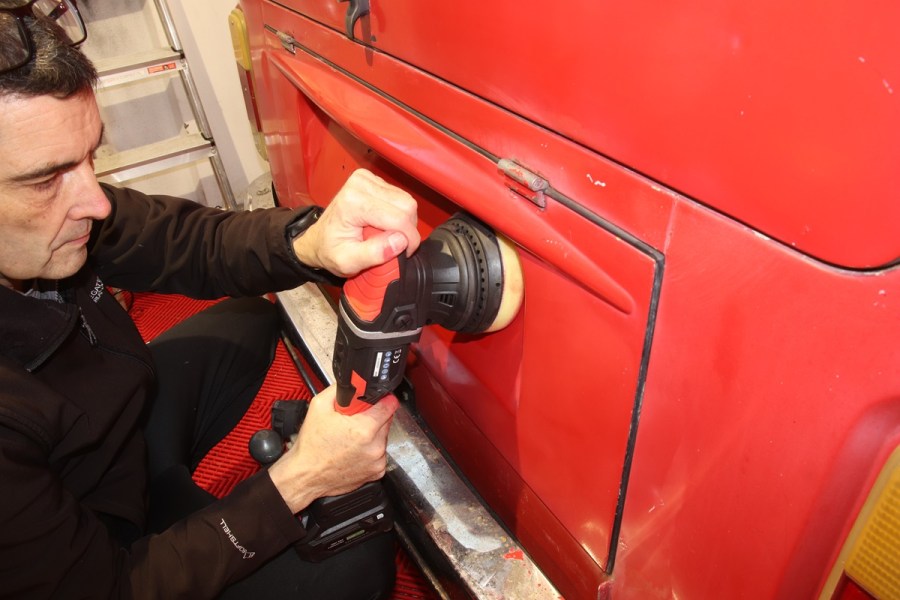
Using the Sealey CP20VOP cordless orbital polisher
This polisher is noticeably noisy when used, producing a high-pitched buzz. It doesn’t get any worse at the faster speed settings, but it’s irritating. Ear plugs may be needed. There’s no gradual start-up of the motor when it’s switched on, although it always starts on the slowest speed setting. And with the slowest speed setting being 2,000rpm, it would help to be lower for polishing jobs.
With a small 125mm-diameter pad, it’s more work to polish large areas than a bigger diameter pad. However, it’s useful for working around tighter spots.
Adjusting the speed using the two buttons is simple and it’s also straightforward to switch the polisher on and off.
I found this polisher is easy to control and effective for rectifying faded paintwork. But it’s quite a handful for polishing.
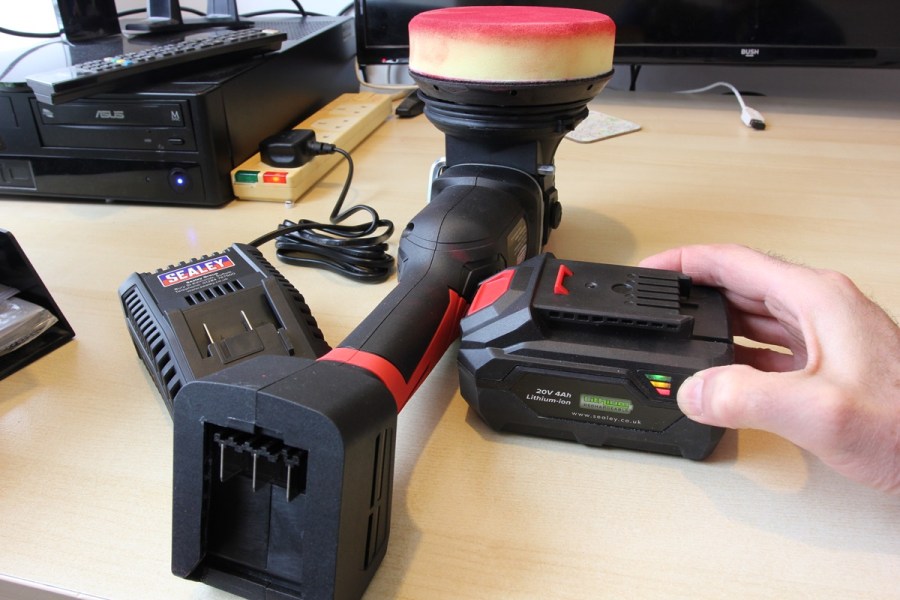
Verdict
As a compact polisher, this one from Sealey has its uses. 125mm means it’s useful for tight spots, but not so good for larger areas. The lack of a handle can make it quite difficult to control at faster speeds. And it needs slower speeds for polishing. But, if you already have some of Sealey’s 20V power tools, it could be an inexpensive addition.




